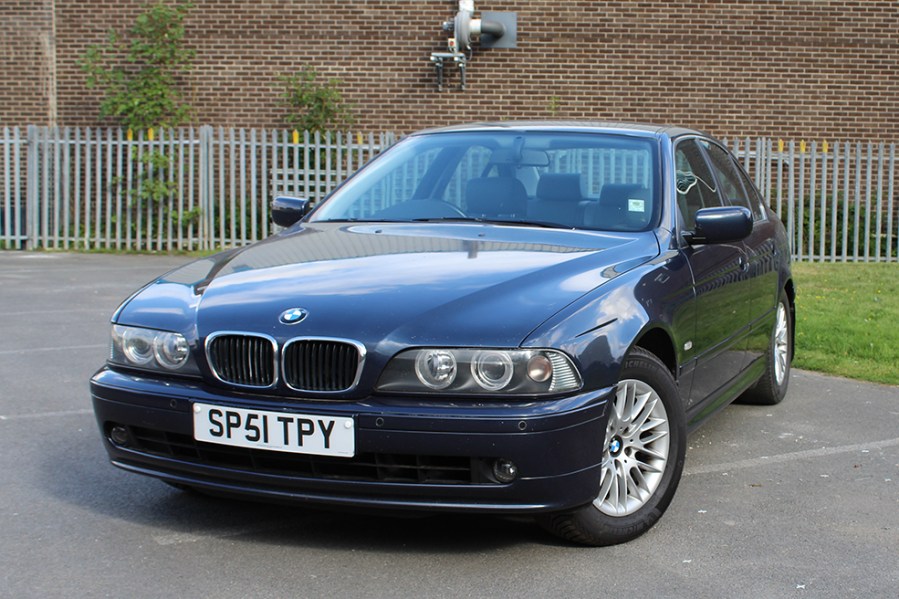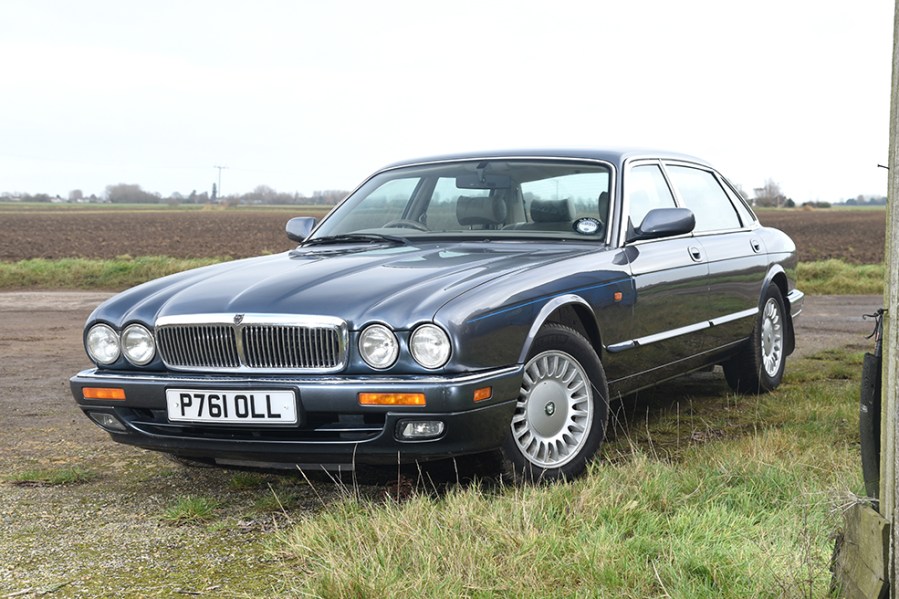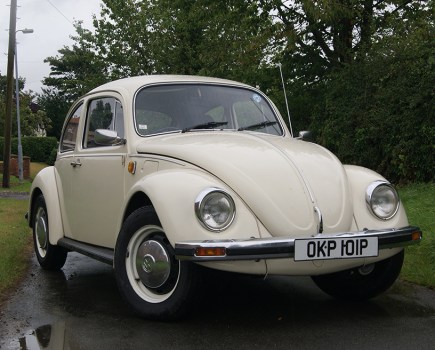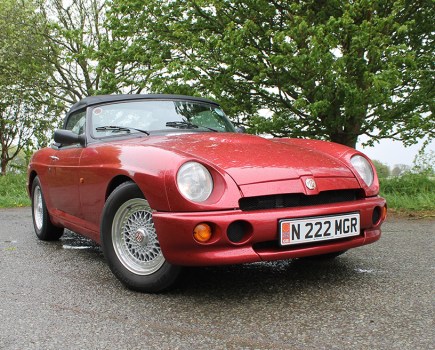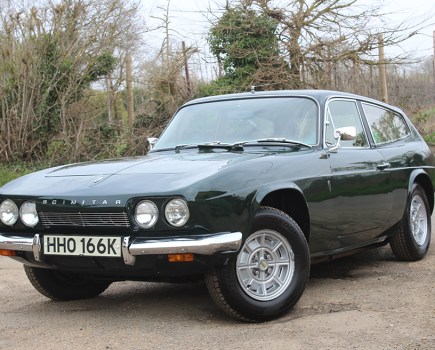With Ford funding, Jaguar updated its XJ40 into the car many reckoned it could have been from the start. Here’s how to buy the X300
Words: Paul Wager Images: Paul Walton
Jaguar may have moved away from retro styling in later years, but back in 1994 a healthy slice of tradition was exactly what the company needed. The angular XJ40 had proved just a little too modern for the company’s existing clientele while not pushing the boundaries far enough to tempt buyers away from German rivals.
Ironically, with the early electric and quality control issues finally sorted, the later XJ40s could match their Teutonic competitors. That was just as well, for even with Ford backing funds were too tight for an all-new XJ. Instead, Jaguar opted to re-skin its existing model in such a way as to provide a true successor to the fondly remembered Series 3 XJ, thus creating the X300.
Introduced in September 1994, the X300 benefited from Ford’s input into production processes, the result being a car which was reliable and properly assembled, as well as boasting big improvements in both refinement and equipment. The new model carried over the 3.2 and 4.0-litre six-cylinder engines, but now in upgraded AJ16, plus the V12 in its 6.0-litre configuration (codenamed X305). However, the most powerful variant was the sporty XJR, now produced in-house and fitted with a supercharged 4.0-litre motor producing 321bhp.
The base model was the XJ6, while the Sovereign boasted more luxurious kit, and an Executive trim appeared later as a run out model. The XJR was the flagship of the XJ ‘Sport’ model line-up, which were aimed at younger drivers and received stiffened and lowered suspension, meatier steering and dark maple wood trim in lieu of the more traditional veneers found in other models. Meanwhile, the XJ12 had Sovereign-level trim, while the highest spec models wore the Daimler badge, with the Daimler Six being powered by the six-pot and the Daimler Double Six getting V12 power.
The X300 was a popular car, clocking up sales of around 92,000 units in a production run of just three years until it was replaced by the V8 X308 model, making it the shortest-lived XJ variant of all. However, the X300 not only turned Jaguar’s fortunes around, but also changed the buying public’s perception of what a Jaguar was.
Bodywork
The X300 fares quite well against the dreaded tinworm, but they’re getting on in years now and aren’t immune to the effects of our climate. Check for corrosion in the front chassis legs as well as the lower corners of the doors, the rear wheelarches, the inner wings and the footwells.
It also pays to check the bumper mounts, which are made from alloy and can corrode to the point of the bumper falling off, and for damage to the plastic sunroof tracks (where fitted). The latter can shatter if a large enough piece of grit becomes caught, necessitating a major strip out to replace them.
It might sound strange, but always check that the boot will unlock/open via the key; with the boot lock incorporated into the central locking, the key mechanism is almost never used until someone presses the valet button, disconnecting the electric release. This setting can only be reversed by using the black master key in a lock that is often seized solid.
Engine and transmission
The six-cylinder AJ16 was fitted to all six-cylinder X300s, with the 216bhp 3.2-litre engine mechanically identical to the 245bhp 4.0-litre unit other than a 19mm shorter stroke. Compared to the older AJ6 unit, the AJ16 gained a stronger cylinder block and head, lighter valve-gear and a new engine management system with sequential injection and coil pack ignition.
While the engine has no major weaknesses, the hydraulic upper timing chain tensioner can fail. It’s not expensive or hard to change but, if neglected, can damage the slipper against which the chain runs, eventually necessitating a full stripdown of the front of the engine. At worst it may allow the chain to skip teeth on the camshafts, causing valve piston contact and most likely lunching the engine. Listen for a brief rattle on start-up from cold to identify this issue. Another problem is the build-up of carbon on the back of the valves, reducing performance and increasing the likelihood of pre-ignition.
Also check the cooling system. The thermostat housing and the back of the water pump can just about disintegrate. Look for swollen hose ends and green-tinged corrosive build-up. Also examine the hoses, especially the lower radiator item as there have been some dubious quality replacements on the market in the past.
The supercharged engine in the XJR is really no less reliable than the standard unit, just a little more awkward when work is needed. For instance, the throttle body is located under the intercooler and only accessible with the car raised up in the air.
The 6.0-litre V12 cars are rare, with only 3400 made. The motor carried over largely unchanged from the XJ40, but it did also switch to coil packs for ignition. These engines are capable of huge mileages but can really suffer when neglected, so check the service record scrupulously. Also ensure all the plugs are of the same age and type (some garages change only the easy to reach ones) and above all ensure the coolant is at the correct strength, the hoses/radiator are in good condition and that there are no signs of weeping from anywhere.
You can’t overheat a V12 and get away with it, as the valve seats will loosen and may drop later with no warning, usually destroying the engine. Also try to start the engine from cold, listening for the faint rumble that warns of main bearing wear.
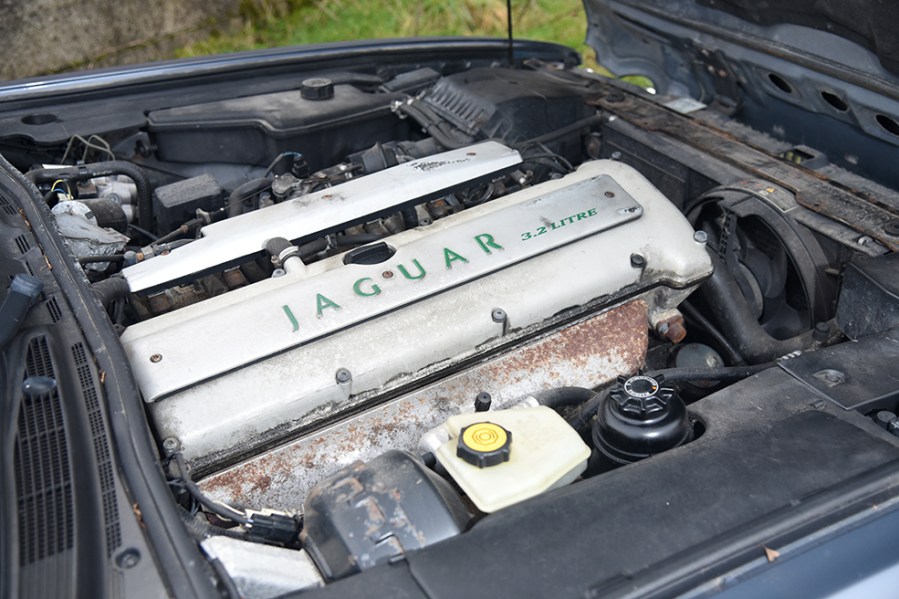
All X300s came with stainless exhausts, so many will have been replaced by now. On six-cylinder cars the cast iron manifolds are prone to cracks; they are expensive to replace and hard to weld. V12 manifolds on the other hand are more likely to suffer from broken downpipe studs as the threads corrode and downpipe/catalysts must be removed to replace the lower wishbone bushes – a reasonably common job.
Four different transmissions were used: the four-speed ZF in both electronic (dual mode) and mechanical forms, fitted to the 4.0-litre and 3.2-litre naturally aspirated cars respectively, the Powertrain (formerly Hydramatic) 4L80E fitted to the V12 and XJR, and the Getrag 290 five-speed manual gearbox available on all six-cylinder cars.
The ZF boxes are extremely reliable if they are serviced regularly, so check for the all-important receipts and ensure they change smoothly on the test drive, with a distinct change between normal and sport modes on 4.0-litre cars. The Powertrain auto has also proven reliable, but can develop a distinct whine in first and reverse as the miles climb. This won’t affect longevity, but the noise can be an issue for some drivers.
The Getrag is both strong and refined, but be aware that they will become noisy with age and the parts supply is restricted to seals, bushes and mounts only. There have also been issues with the dual mass flywheels failing and they are no longer available new – fortunately the conventional he conventional flywheel and clutch from a late XJ40 will fit.
A noisy rear axle isn’t uncommon on high-mileage cars as the differential’s internal bearings wear. Replacing them means a full axle stripdown but the axle seems to get slightly whiney and then not get any worse for the next 100,000 miles, so if it doesn’t bother you unduly then simply live with it.
All the same it’s worth checking for leaking pinion seals and for perishing of the rubber coupling at the rear of the propshaft. Since the Jaguar design uses the driveshafts as the upper suspension link, it’s important that the universal joints, wheel bearings and differential output bearings are all free of play. It can all be replaced but it’s costly doing it all at once.
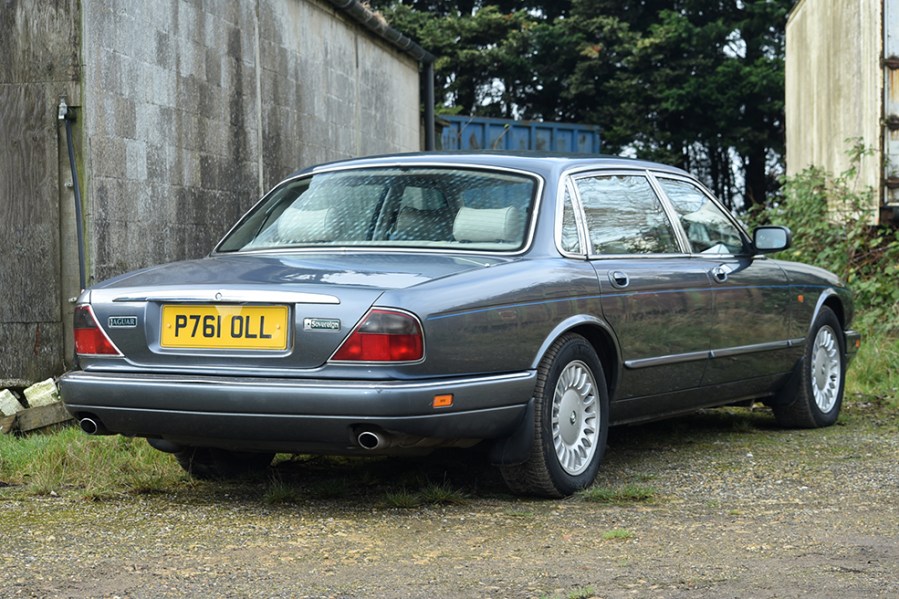
Suspension, steering and brakes
The basic suspension layout is largely the same as that fitted to the XJ40, though problems tend to occur at higher mileages with the X300. At the front end, check for split subframe mounts and corrosion in the subframe itself, as well as worn upper and lower wishbone bushes which allow the arm to move off-centre on its pivot. The lower ones can be a problem as the factory spring compressor is needed and, as mentioned, V12 cars need the catalysts to be removed first.
Ball joints tend to last well, but wheel bearings often need replacing at 80,000–100,000 miles. Dampers can also feel tired by 100,000 miles although sometimes it’s just the soft upper mounting bushes, which will cause a knocking when they fail.
A loose feeling from the rear end will often be down to the big rubber/aluminium subframe mounts failing, while a clunk can be due to worn spherical bushes where the dampers mount to the lower wishbone. A creak from the rear can simply be the foam isolators at the top of the springs, which can be cured with a squirt of lubricant. Also check the subframe itself for corrosion, as we’ve seen breakages before.
Steering-wise, racks will eventually leak past the end seals into the gaiters and start to split in the rubber mounts, while most external leaks are caused by the high-pressure pipe chafing through on the engine mount bracket.
As for the brakes, it’s all pretty conventional, with electronic ABS and sliding single-piston callipers all round. It’s a very reliable system overall, but disc/pad wear will be much heavier than on earlier Jaguar models and it pays to check carefully as a full overhaul will cost several hundred pounds in parts alone. All cars feature ABS, with any problems are usually down to the sensors or corroded or dirty trigger rings.
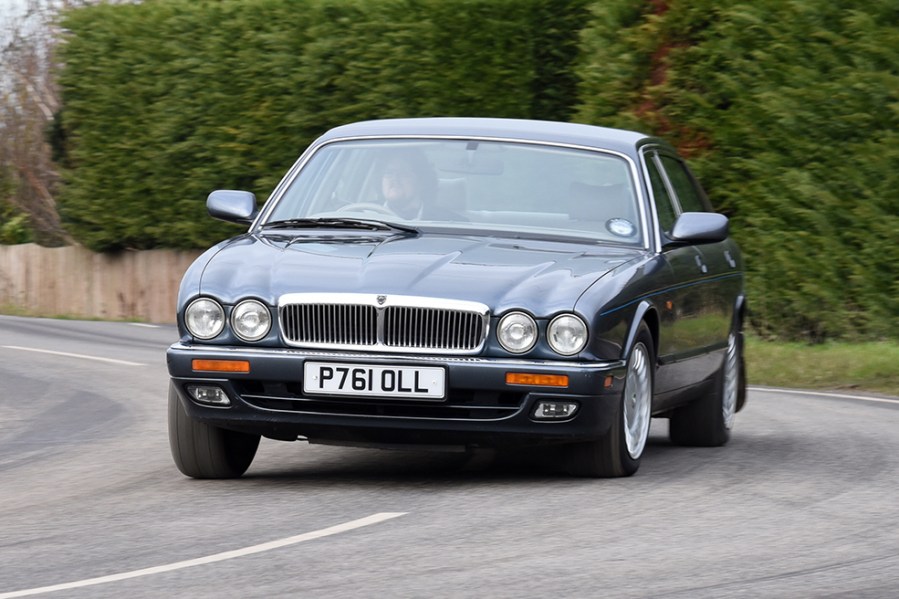
Interior, trim and electrics
This was the last Jaguar model to have its seats manufactured in-house with the rest of the interior, and they’ve proved to be resilient, with side bolster wear on high mileage sports tirm the only real gripe. As with previous XJs, the headlining will eventually start to sag as the foam backing breaks down; DIY headlining kits are available but we’d recommend a professional trimmer due to the complexity of the moulding it’s glued to.
The air conditioning can suffer from blocked heater matrixes, seized coolant valves and failed pump motors (the heater circuit has its own electric pump). Fortunately all are relatively easy to sort, but recommissioning a system that has been left idle can be expensive. Meanwhile, the X300’s electrics have proven remarkably durable – certainly when compared to earlier XJ40s. Clock and heater/air-conditioning displays will fade over time but can be repaired while the electrically adjustable steering column (where fitted) can eventually strip its gears, so be sure to check it.
Jaguar XJ (X300): our verdict
The X300 was very well regarded when new, with the XJR labelled as “probably the best saloon car in the world” and “the goal of every luxury car maker” by the contemporary motoring press. Nowadays its often more highly prized than its X308 successor – it’s certainly cheaper to run in extremely durable six-cylinder guise and avoids the issue with Nikasil-coated bores on pre-2001 model year X308s, as well as being a bit more traditional “Jaguar” than the more Ford-influenced later car. And with prices still affordable, the X300 makes a tempting choice as a modern classic you can use all year round.
A decade ago, you could get your hands on a good X300 for under a grand, and even the XJR was a sub-£2000 high-performance smoker rather than a cherished classic. But the X300 has evolved to become classy and desirable once again. Today you’ll need at least £2500 for a presentable 3.2 Sport or a smidge more for the plusher Sovereign or Executive models.
But the breadth of prices is now far larger, and for a really nice one, you’ll need £5000 or more. The very best cars, with impeccable pedigree and low mileages, are advertised by dealers at over £10,000, while the rarer Daimler and V12 variants are now pushing their premium up to as much as double the comparable XJ6 models. As for the XJR, exceptional ones are already over £10,000, and rising. However, with folk potentially looking to tighten their belts in the current financial climate, some more keenly priced X300s could well emerge.
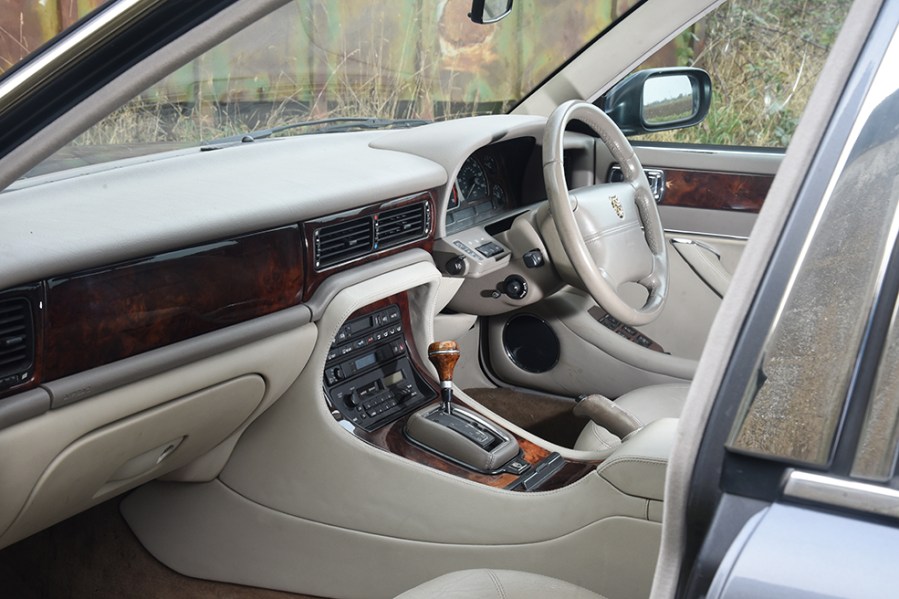
Jaguar XJ (X300) timeline
1994
The X300 is launched. Engine options included the entry-level 3.2, the 4.0-litre and the supercharged 4.0-litre in the XJR, plus the 6.0-litre V12 featuring same level of trim as the Sovereign
1995
Long wheelbase (X330) launched available for all “classic” models, but not sport variants. This became the standard bodyshell for the 4-litre Sovereign in October 1996
1997
17 February sees the very last V12 engine produced, with the final XJ12 coming off the line in April. The X300 ceases production in August 1997 to make way for the V8 powered X308
Jaguar XJ (X300) alternatives
Mercedes S-Class (W140)
Although the X300 represented a marked step up in quality and modernity for Jaguar, the mighty Mercedes S-Class remained a cut above for many. With engines ranging from six-pots to a vast V12 and more luxury and equipment than you could ever need, it’s a tough call.
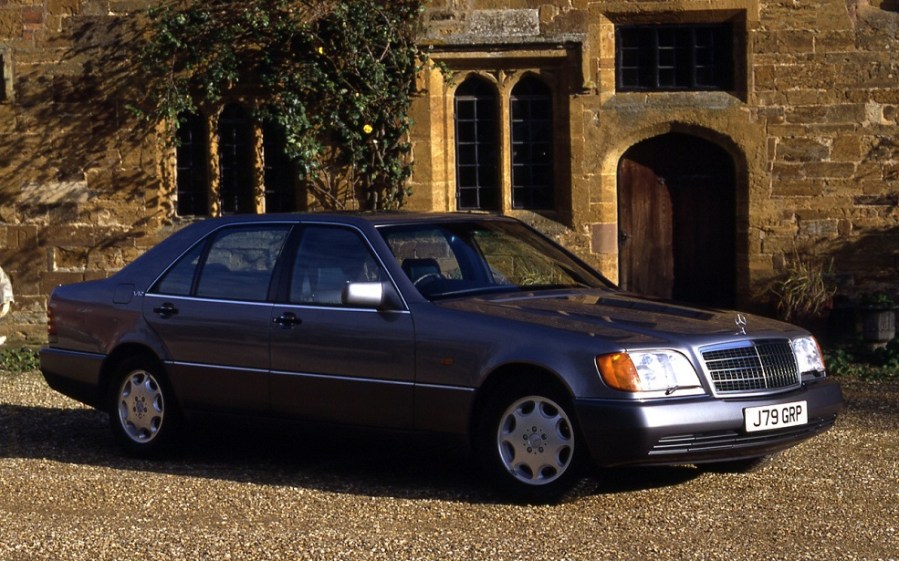
BMW 5 Series (E39)
While not quite as luxurious as upper-trim Jaguars, the E39-generation BMW 5 Series could more than match the X300’s handling, comfort and practicality. A wide range of petrol and diesel engines, the option of the capacious Touring and plenty of long-lived examples available make the E39 a strong choice.
